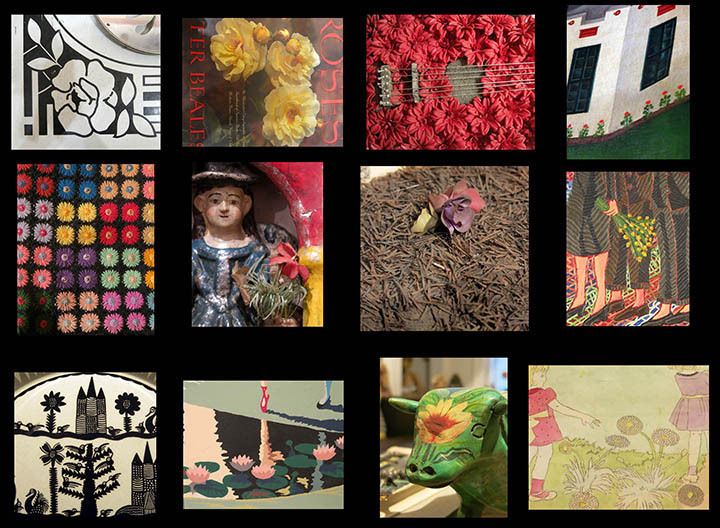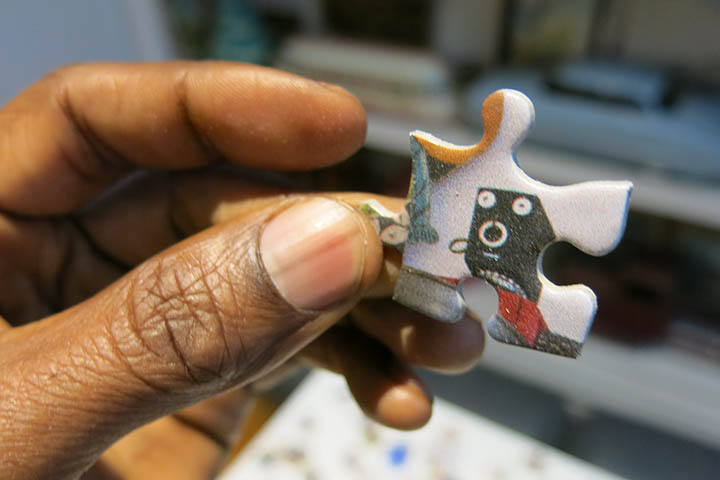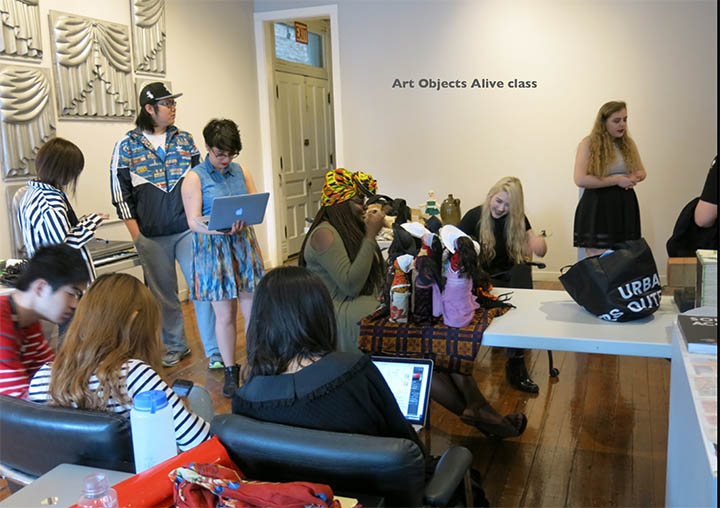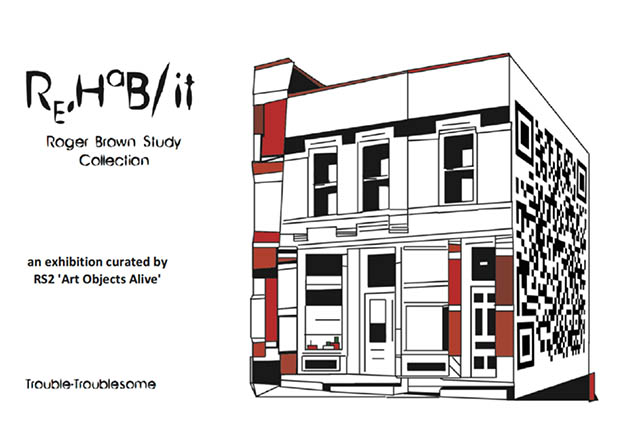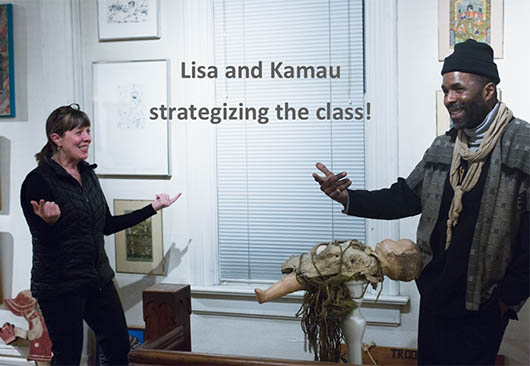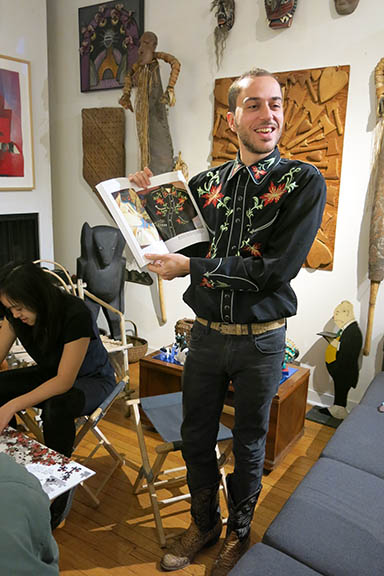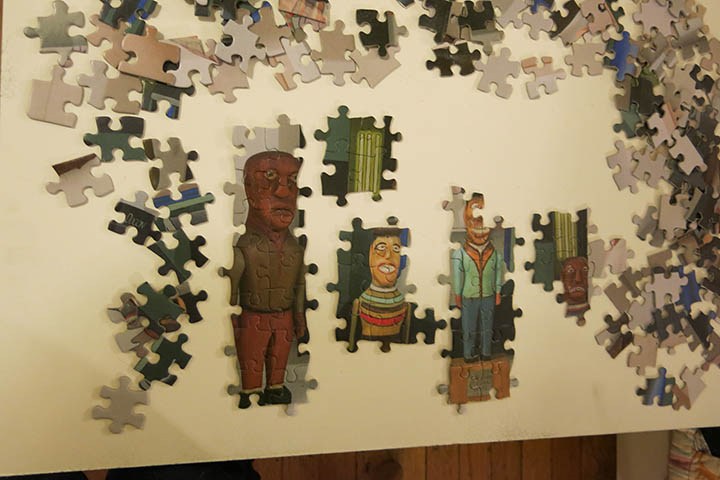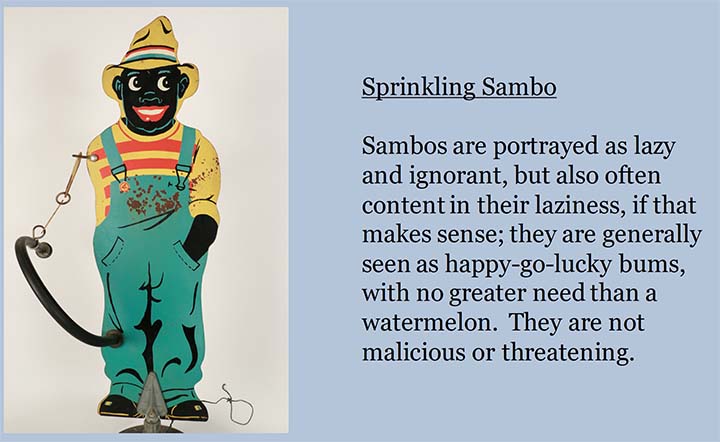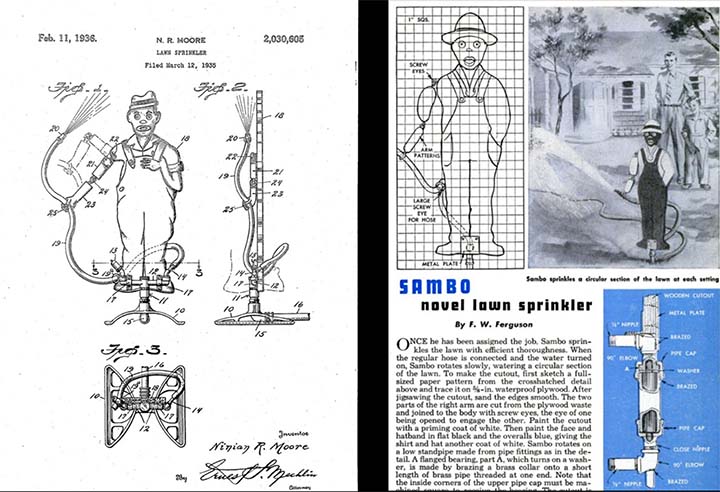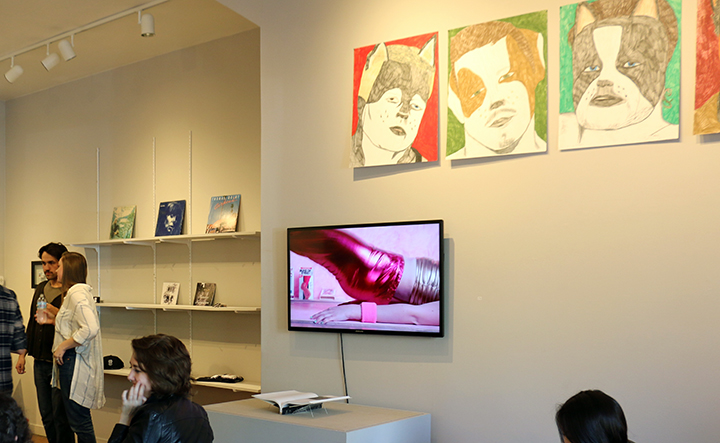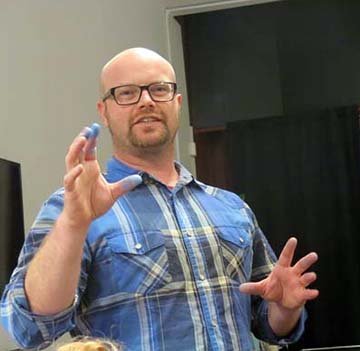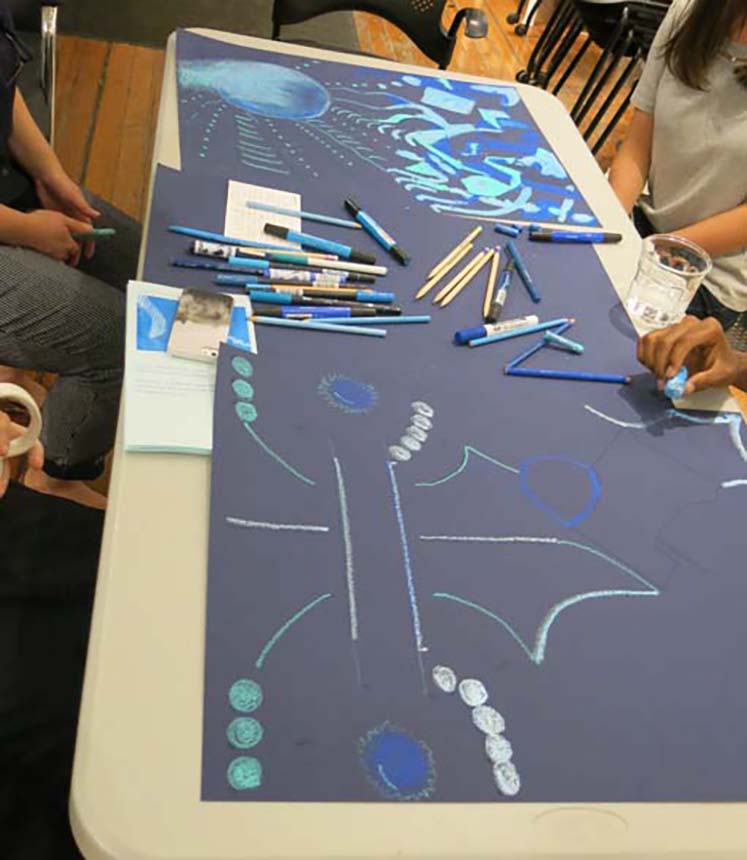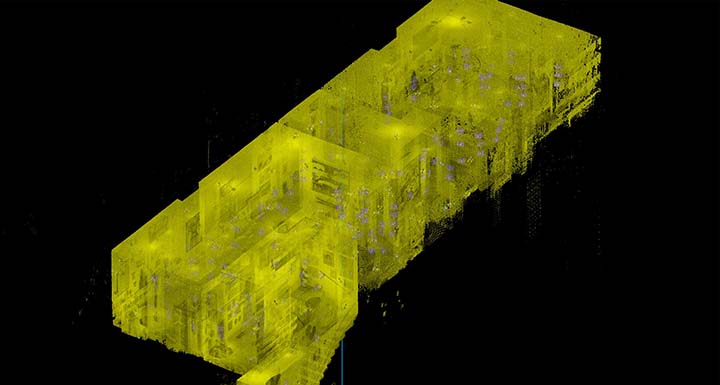the floodgates of possibility: RBSC overdue spring/summer update 2017
Tuesday, October 3rd, 2017 » By lstone » See more posts from ALL THE NEWS, RBSC NUTS 'N BOLTS
We often refer to the Collection as an ecosystem, an array of individual elements that coalesce into an entity, each part contributing to the limitless possibilities for thinking about, around, and through objects and their relationships. This approach opens the floodgates of possibility, which are currently stuck open.
An analogy we had neglected to consider, that came rushing through the floodgates, is the jigsaw puzzle. Let’s pretend this missive is a dining room table, on which I’ll dump out the box of what’s happened and sort out the pieces into a picture of spring and summer, 2017, at the Roger Brown Study Collection.
Who came and what they did
classes/guests/exhibitions
In Spring semester class projects put us through our paces and sprung surprises on us right and left. Nick Lowe’s Research Studio 2, ART OBJECTS ALIVE! class began by examining Roger Brown’s written responses to troubling works of art or situations, specifically David Nelson’s Mirth & Girth painting and Dred Scott’s What is the Proper Way to Display a U.S. Flag?, both of which caused uproars at SAIC.
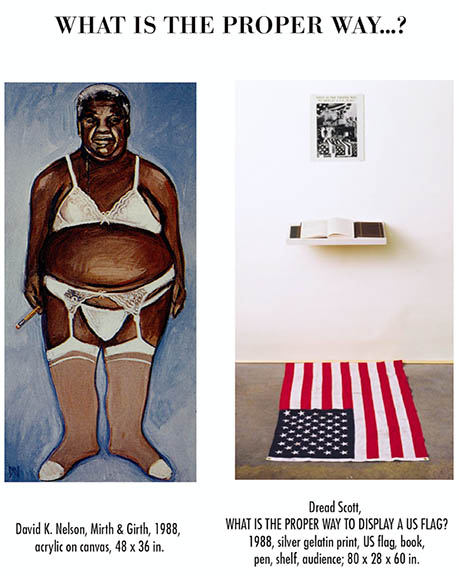 The class then explored the Collection with the directive to find an object or objects that were troubling or troublesome, friction-filled, or angst provoking. They had no difficulty discovering difficulty.
The class then explored the Collection with the directive to find an object or objects that were troubling or troublesome, friction-filled, or angst provoking. They had no difficulty discovering difficulty.
They then re-made the object(s), purposefully reclaiming them from the realm of trouble. They curated the exhibition RE-Hab-it, creating interpretive settings for their objects. The work was sophisticated and inventive, the exhibition expertly curated.
More images can be seen on the ReHab/It facebook page
Kamau Patton’s, Participation and Self-Organization, a class in the Visual Critical Studies Department, met at the collection early in the semester.
Students were instructed to find an area or work of art or concept that inspired them to consider the collection as an ecosystem, a whole of many diverse parts, to consider dimensions of space and time and philosophical interpretations. They returned to the Collection in early May and presented their projects, which once again opened the collection to new and novel ideas and possibilities.
As a parallel project Kamau invited artists Mary Eleanor Wallace and David Sampson to photograph areas of the collection. Mary Eleanor had jigsaw puzzles made of 6 images, which she installed in the areas they depict, as “puzzle stations.”
The students and RBSC staff members had a few hours to work on the puzzles, either individually or in groups. We all became completely immersed in the enchanting process of puzzling over many small parts of a picture one could see on the box cover, or in reality, right in front of our eyes. Guests may now schedule time to gaze at an area in the collection, and try to assemble it, piece by piece.
Object Puzzles was originally a group exhibition/retail project released in December 2016 at Tusk in Chicago. 20 different artists were asked to make an object that would be photographed and the photo was made into a cardboard jigsaw puzzle. Guests at the opening event were invited to put the puzzles together by referencing the physical object only. Photos taken by David Sampson. Project curated by Mary Eleanor Wallace. We thank them both!
Nick Lowe’s Special Collections Practicum class met for most of the semester at the RBSC. The class got rolling the first day of class, doing condition reports and packing the Doris E. Lane First Ladies dolls for their return trip to the Museum of Jurassic Technology.
One class team addressed our current plan to create bookcases on the west wall of the orientation/project space, so we can finally unpack, organize, and provide access to Brown’s libraries from all three homes. Emily Fenn, Sam Snodgrass, Kaylie Deng, and Elizabeth Mescher took on the project to consider aspects of this project, including:
- Assessment of the books in terms of size, subject, condition.
- Assessment of ephemeral materials found in the books, as well as Brown’s notes and marginalia.
- Strategies of display: organizing by color, size, subject, completely random.
Bookcases will be installed in early October so watch this space!
We’re currently engaged in the project to research and contextualize the eight intentionally racist objects in the RBSC, to develop narratives within the interpretation of the larger ecosystem of the collection, a tightrope of presenting objects as historical evidence, providing a critical analysis of what they express, and placing them in historical and cultural contexts without apologizing for their existence in the collection.
In Nick’s class, Alejandra Vargas examined the objects and conducted research into their manufacture and meanings and the questions they raise.
RBSC staff communicated with Lisa Kemmis, museum assistant at the Jim Crow Museum of Racist Memorabilia at Ferris State University (Michigan), to talk about how to effectively interpret these objects.
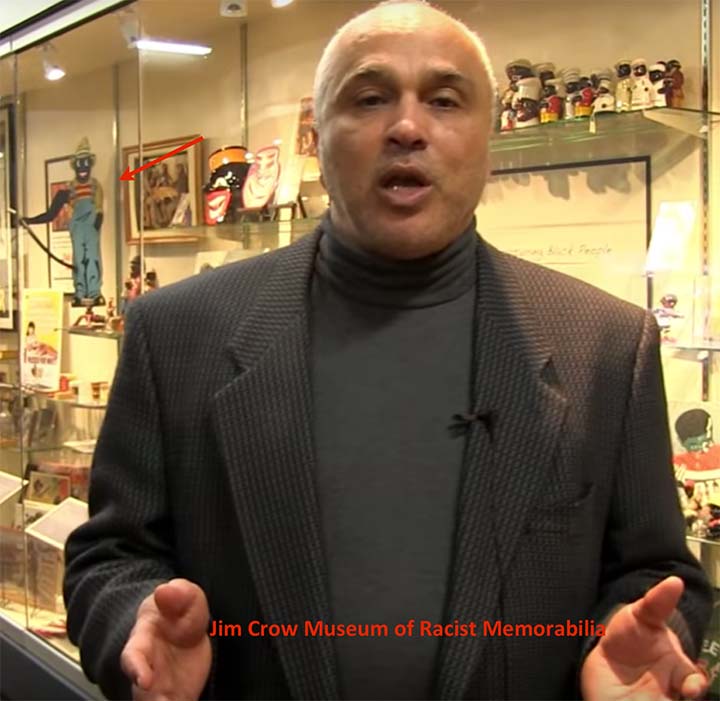
David Pilgrim, director, Jim Crow Museum of Racist Memorabilia
The Museum’s founder, David Pilgrim, who is also Ferris State’s vice president for diversity and inclusion, said of the objects he collected and gave to the museum, “Using racist objects as teaching tools seems counterintuitive—and, quite frankly, needlessly risky. Many Americans are already apprehensive discussing race relations, especially in settings where their ideas are challenged. The museum [and this book] exist to help overcome our collective trepidation and reluctance to talk about race.”
Ms. Kemmis provided invaluable information about several racist objects, including Sprinklin’ Sambo, an object represented in the RBSC and the Jim Crow Museum, which Alex explored in her project.
Near the end of the semester we agreed to host an exhibition of works by 18 students in Michael Ryan’s What’s My Job class. The class showed a high level of esprit de corps and pulled together the show, Roger That, in record time.
Collections
Faculty member Tim Nickodemus has been working on a many-faceted project around Joseph Yoakum’s work. He made 35 Second Hand Land Scapes that were installed in the Yoakum Room during the annual six-month rest rotation. We were honored to have his creative responses on view this summer. We’ll show them again in the next rest rotation, March 2018.
Smart staff at the Smart Museum hosted Drawing in the Dark: Landscape, Memory, and the Artist’s Mark with guest artist Tim Nickodemus. Participants first met at the Smart Museum for an evening exploring landscapes and Yoakum works in the Museum’s collection, then drawing and writing Yoakum-inspired postcards. Two weeks later they met at the RBSC. Following an inspired presentation by Tim, participants explored the collection and then hands got dirty and dark drawings were made.
Last summer AIADO faculty member, Jaak Jurisson, taught Virtuality at the Roger Brown Study Collection. Using various 3-d scanners the class scanned architectural spaces and sculptural objects and used the information to manipulate, re-design, re-fashion and re-purpose the spaces. The class began the project, which James Connolly completed, to scan the entire RBSC with a FARO scanner. The files provide invaluable documentation for the eventual renovation of the second floor and two stairways, and give us an unexpected and magical way of seeing in, through, and around this place.
Loans
We’ve worked with Kavi Gupta staff to organize loans of works by Roger Brown, Jim Nutt, and Christina Ramberg to the exhibition Famous Artists From Chicago 1965-1975. Curated by Germano Celant, this major show opens at Fondazione Prada/Milan on October 19. Celant visited Chicago on the occasion of EXPO CHICAGO, and explored the RBSC, prior to a panel discussion with Gladys Nilsson, Suellen Rocca, and Lisa Stone, at Navy Pier.
We’re barreling through fall semester with a stellar team of old (Matias Anon, Xiao He) and new (Alessandra Norman, Alex Fiorentino, Cat LaMendola, and Carolina Velez) staff members, with co-curator James Connolly at the helm.
More soon and all the best,
Lisa Stone
Tags: David Pilgrim, David Sampson, Doris E. Lane, Erik Peterson, Expo Chicago, Fondazione Prada, Germano Celant, Jaak Jurisson, James Connolly, Jim Crow Museum of Racist Memorabilia, Joseph Yoakum, Kamau Patton, Kavi Gupta, Mary Eleanor Wallace, Michael Ryan, Museum of Jurassic Technology, Nick Lowe, Smart Museum, Tim Nickodemus

